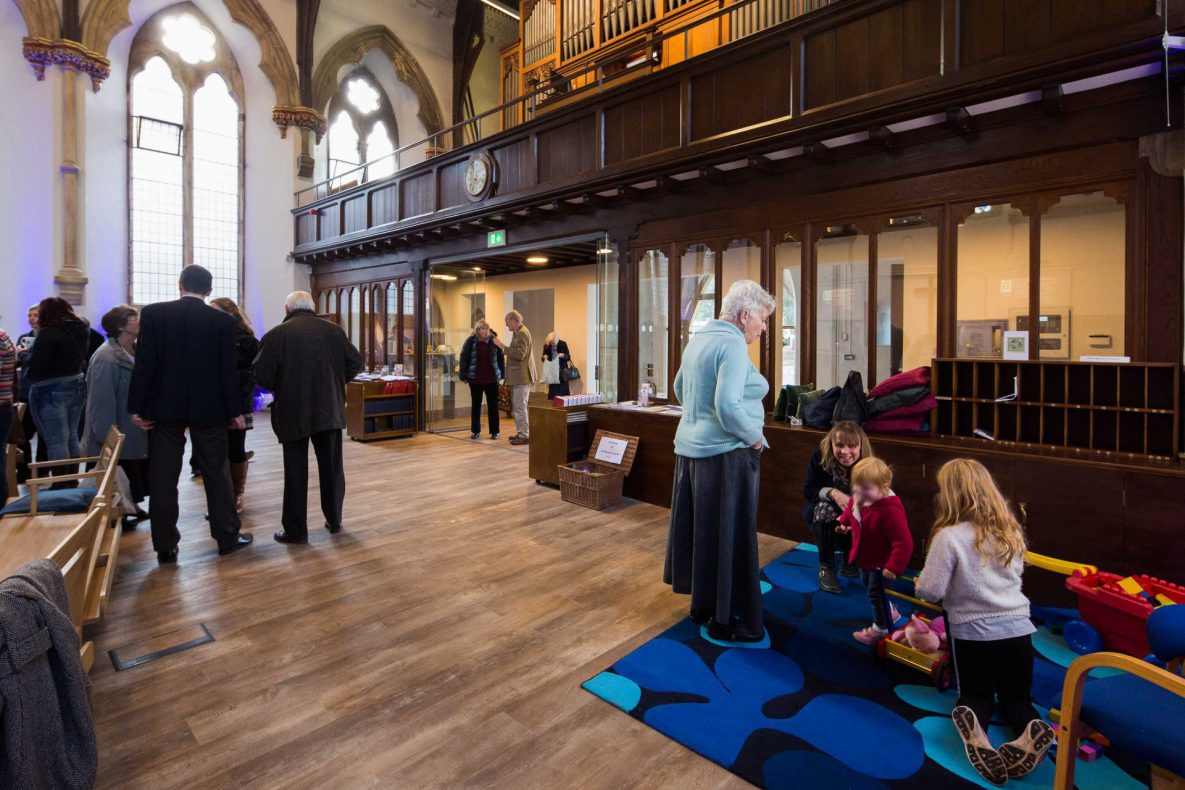Victoria Methodist Church







Shortlisted
Community Benefit
RICS South West 2019
A three stage refurbishment to give the Vic a new lease of life.
The 150-year old Grade-II listed Victoria Methodist Church in Clifton, Bristol, is home to an active congregation of about 100 of all ages. It occupies a wonderful location at the heart of a vibrant cultural neighbourhood that includes the RWA, Bristol City Museum, the BBC, and the University.
It has a serious social outreach mission and hosts local community groups, including Alcoholics Anonymous, Cocaine Anonymous, dance and Tai Chi classes, and a mental health group.
Despite the building’s enormous potential, its activities have always been hampered by significant constraints. Built on a sloping site and set back from the road, its frontage was anonymous. The entrance was hard to see and poorly lit. External disabled access was awkward or impossible.
Inside, fixed pews restricted both new styles of worship and other uses, such as staging performances. The layout posed safeguarding issues, an important consideration when working with children and vulnerable adults.
The large basement hall was difficult to access and underused. Connecting stairs, circulation spaces, kitchen areas, and toilets were all hard to access, dated and badly located. Lastly, the building’s lighting was inadequate and its heating was wasteful, with poor controls.
In 2011, Victoria’s leaders consulted the management group and congregation to reappraise its future. Very much in the spirit of their faith, the congregation agreed an ambitious new vision to ‘share the Gospel by encouraging lifelong learning through media and the creative arts.’
For it to reach its full potential the leaders agreed that the building would have to be upgraded to open it up physically and symbolically to the local community. Working with the wider community, they raised £1.3m, with about half coming from Methodist and Arts grants, and the rest from donations.
Our multi-disciplinary team of surveyors and architects were appointed in 2012 and have walked alongside the volunteer client team ever since. An initial survey and briefing process produced a sensitive three-phase redevelopment plan with breaks for fundraising.
Phase A completed with Stone BCI to a very high quality in October 2017. Light conservation work on the existing fabric introduced a new access ramp at the front of the church, leading to a new north entrance and a new lift to the basement. The original front door was replaced and put back into use. Its oak-framed glazed construction bring views and light all the way in to the sanctuary, a symbol of welcome and openness.
The narthex was enlarged into the porch, making room for new accessible toilets and a convenient tea point, while the problematical fixed pews were replaced with with easy-to-move, stackable seating. Underfloor heating was installed along with a new stone floor, creating a beautiful open expanse that allows almost infinite flexibility of uses within the sanctuary.
A building management system means the heating can easily controlled remotely through an app, making it much more responsive and efficient. Other services include low-energy LED lighting, a professional array of stage lighting, enabling the church’s aspirations to host more performances.
Phase B will see the basement reconfigured, making the large hall infinitely more useable and upgrading the associated spaces, resolving the access and safeguarding issues in the process. External works will install lighting at the front and reconfigure the forecourt to further improve the church’s street welcoming presence without compromising security.
Phase C will extend the north flank of the church with a sympathetic new entrance lobby and glazed cloister running the length of the building to the rear. An existing lightwell at the rear of the church will be roofed to create a new atrium and staircase. Corridors will be widened and the spaces at the rear of the church will be reconfigured to make new meeting rooms.
So far the result has delighted the congregation, attracted new groups, and is forging strong new links to the local community. Its street presence is now open and welcoming. Access has been significantly improved, and the new flexibility of the internal spaces is allowing many more uses.